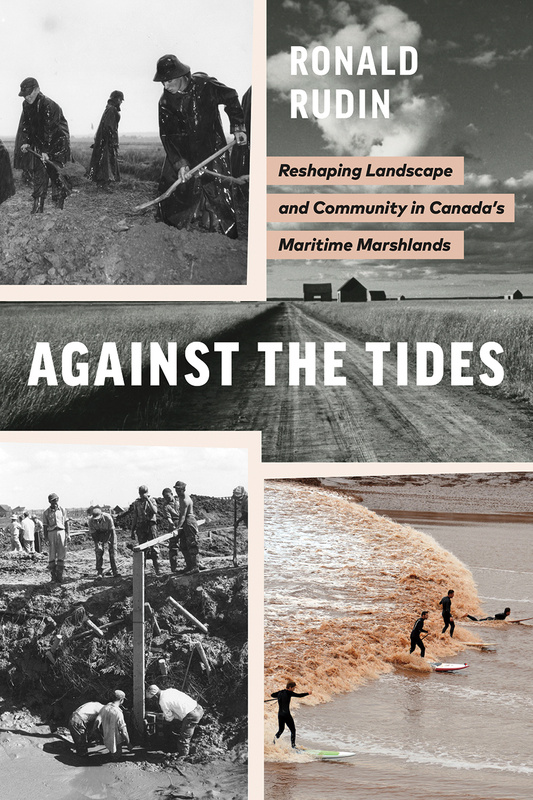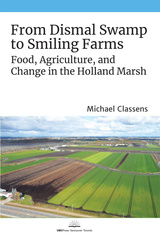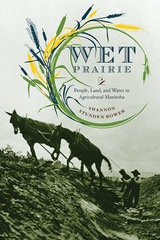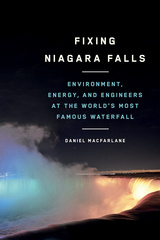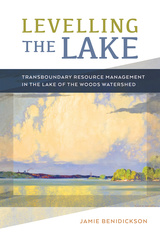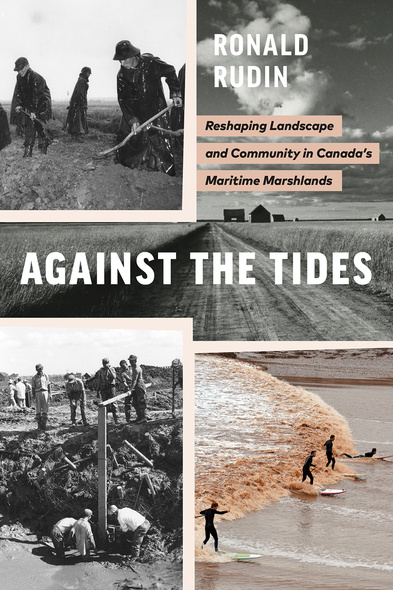
Against the Tides
Reshaping Landscape and Community in Canada’s Maritime Marshlands
For four centuries, dykes held back the largest tides in the world, in the Bay of Fundy region of New Brunswick and Nova Scotia. These dykes turned salt marsh into arable land and made farming possible, but by the 1940s they had fallen into disrepair. Dykeland was in danger.
Against the Tides is the never-before-told story of the Maritime Marshland Rehabilitation Administration (MMRA), a federal agency created in 1948. As farmers could not afford to maintain the dykes, the MMRA stepped in to reshape the landscape and with it the communities that depended on dykeland. Agency engineers borrowed from some of the farmers’ long-standing practices, but they were so convinced of their own expertise that they sometimes disregarded local conditions, marginalizing farmers in the process. The engineers’ hubris led to construction of tidal dams that compromised a number of rivers, leaving behind environmental challenges.
This book combines interviews with people from the region, archival sources, and images from the record the MMRA left behind to create a vivid, richly detailed account of the push–pull of local and expert knowledge, and the role of the state in the postwar era. Ultimately, Against the Tides is a compelling study of a distinctive landscape and the people who inhabited it that encourages us to rethink the meaning of nature.
Environmental historians and historians of Atlantic Canada will find this an absorbing account, as will individuals with an interest in water-related issues.
Ronald Rudin has also created a film to go along with the book. Please visit www.unnaturallandscapes.ca to find out more.
Against the Tides is a skillful examination of distinctive landscapes and histories...[it] is also an illustration of the potential of community-involved scholarship and a powerful reminder of how audiovisual materials can enrich research dissemination efforts.
Concise, perceptive, concrete yet conceptual, Against the Tides comes ready for use.
[Against the Tides] is a timely read with climate change and rising sea levels tilting waters back into the marshlands.
An articulate and readable contribution to the literature on postwar environmental engineering by the Canadian state, the book highlights compelling local stories and perspectives, placing them into national and international context.
… accounts such as Rudin’s are important. They highlight how easy it is to lose sight of long-term goals, and how challenging it can be to still make different choices despite knowing past history. And it calls forth the real underlying question: whose knowledge matters?
Told using primary sources that have rarely, if ever, been exploited, Against the Tides is truly something new under the sun. Rudin succeeds in making the fragmented and chaotic story of the marshlands both understandable and highly interesting.
Against the Tides is an environmental story of people and place, of war and peace, of struggle and resilience, and of science and humanity … Rudin encourages and enables the reader to reflect on the sweep of time and tide across the Fundy marshlands; to contemplate anew the variety, intricacy, and consequences of human-environment relations; and to ponder – with some urgency – the future of our planet.
Ronald Rudin is Distinguished Professor Emeritus in the Department of History at Concordia University. He is the author of numerous books, among them Remembering and Forgetting in Acadie: A Historian’s Journey through Public Memory and Kouchibouguac: Removal, Resistance, and Remembrance at a Canadian National Park. The latter received the Canadian Historical Association Clio Prize for best book on Atlantic Canada, the Canadian Oral History Association Prize, and the Prix de l’Assemblée nationale from the Institut d’histoire de l’Amérique française. Rudin has produced eight documentary films, most recently Unnatural Landscapes, which accompanies this book.
Part 1: Second Nature
1 Out to Sea
2 Reconstruction
Part 2: Third Nature
3 Dam Projects
4 Legacies
Epilogue: Meet the Grand Pre Marsh Body
Notes; Bibliography; Index

